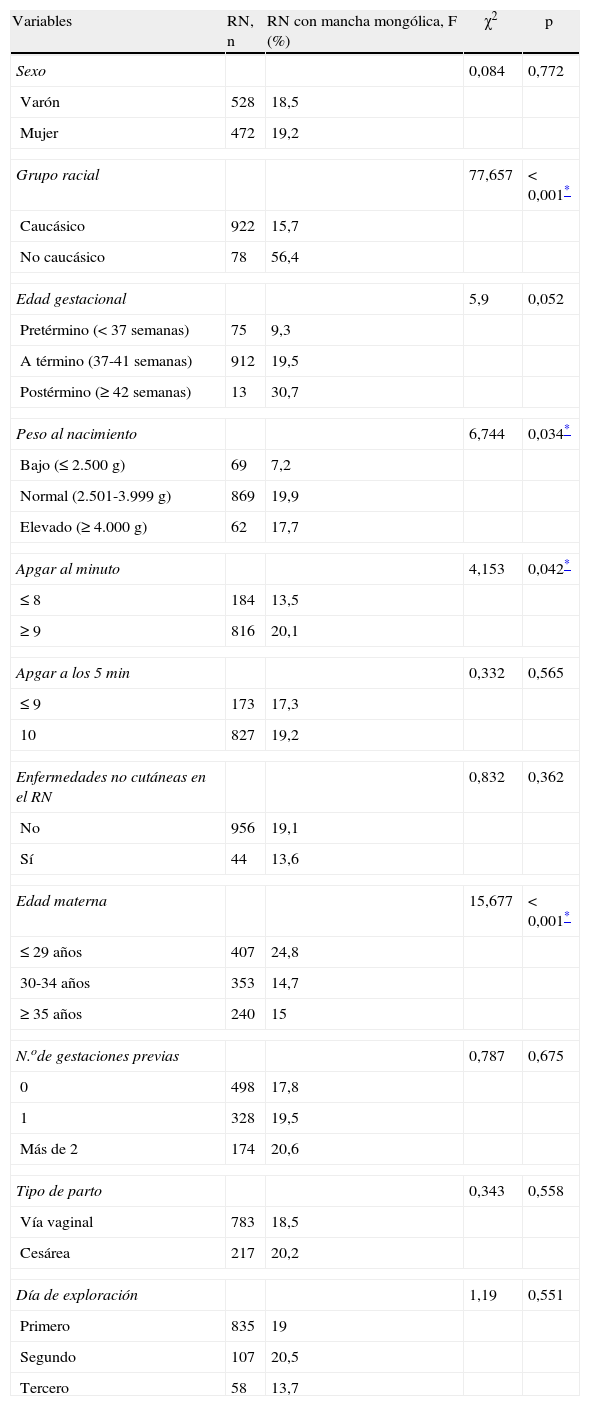La mancha mongólica es una mácula azul grisácea situada habitualmente en la región lumbosacra. Nuestro objetivo es conocer su prevalencia y características clínicas en los recién nacidos de nuestra área sanitaria, y ver cómo influyen los factores neonatales y maternos en su aparición. Realizamos un estudio descriptivo donde se revisó, entre mayo de 2008 y noviembre de 2009, a 1.000 neonatos nacidos en el Hospital Arquitecto Marcide, Ferrol, España. Presentaba mancha mongólica el 18,9% de los neonatos. La región lumbosacra y las nalgas fueron las localizaciones más comunes, con 155 (15,5%) y 53 pacientes (5,3%), respectivamente. Se observó una prevalencia mayor en los recién nacidos a término o postérmino, sexo femenino, no caucásico, mayor peso al nacimiento, parto por cesárea y madre de menos de 30 años de edad con al menos una gestación previa.
Mongolian spot is a grey or bluish macule usually arising in the lumbosacral area. The aim of this study was to determine the prevalence and clinical features of this entity in our population, and the influence of several parameters related to both the mother and the neonate on its occurrence. We performed a descriptive study between May 2008 and November 2009. A total of 1,000 live newborns admitted to the Hospital Arquitecto Marcide in Ferrol (Spain) were reviewed. Mongolian spot was present in 18.9% of the newborns. The most commonly involved sites were the lumbosacral area and buttocks in 155 (15.5%) and 53 (5.3%) newborns, respectively. The following factors were found to be associated with a higher prevalence of Mongolian spot: full-term or postterm newborns, female sex, Caucasian race, higher birthweight, cesarean section, and maternal age more than 30 years old with at least one previous pregnancy.
Artículo
Comprando el artículo el PDF del mismo podrá ser descargado
Precio 19,34 €
Comprar ahora








